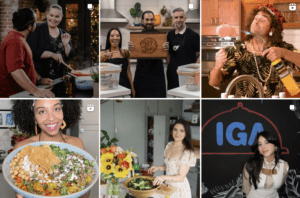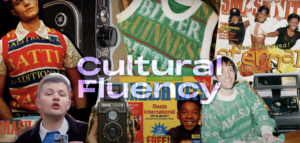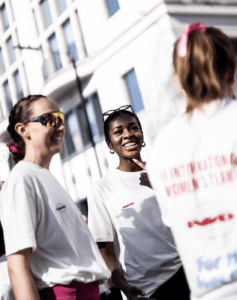We’ve all tried a filter on social media at one point or another. Whether it’s the flower crown or the dog ears, when they first came out they were a super fun way to keep us entertained and share with our friends and family.
In 2015, Snapchat initially offered basic augmented reality (AR) filters which went viral. They were a game changer. Since then, Snapchat has evolved. In 2017, they released Lens Studio for users and advertisers which allowed everyone to create custom filters and apply them to personal snaps and sponsored content.
The popularity of those filters led other social media platforms to create their own, with Instagram introducing AR filters in 2018. This was a huge step in the world of AR.
@chiaraking But why do i like it #boldglamour #boldglamourfilter ♬ party with a monster – Chiara King
Following in the steps of Snapchat, Instagram allowed creators to show off their creativity with their own personalised filters. Content creator Coco_floflo even had her own filter named ‘filenoir’.
The introduction of AR allowed everyone to have fun whilst being creative. It was a great business opportunity, allowing them to get closer to their followers by creating personalised filters that reflected their brand identity.
Fast forward to now and AR filters are now being replaced by AI filters.
Snapchat is still considered the leading platform, but as TikTok has gained users, they’re now challenging Snapchat for the title – something Instagram tried and failed to do.
Back in December 2022, we were all introduced to the viral ‘magic avatar’ feature on the photo-editing app Lensa. The app allows users to transform selfies into AI-generated avatars.
Launching to meteoritic popularity overnight, Lensa became one of the most downloaded photo and video editing apps on the app store.
Some may argue that Lensa’s AI-generated filter opened the door to TikTok launching its own in the form of ‘Bold Glamour’. Creator Chiara King posted a video to the platform after it launched to show how the filter makes her look like a “completely different person”.

Since its launch in February of this year, there have been 1.5 million videos and counting using Bold Glamour and over 400 million views. Suffice to say, the filter has taken over our social spaces and made a big splash.
The filter uses AI to assess your face and then completely re-moulds it as though you have undergone an actual cosmetic makeover. The filter has been created so that it’s difficult for others to know you have used it. It’s both simultaneously over-the-top in its transformation and scarily subtle. And there’s a reason it’s so realistic, TikToker zhangsta explains that it was created using machine learning.
She says “Unlike traditional beauty filters that use an augmented 3D face mesh that is overlaid on top of your face, filters like Bold Glamour and Teenage Look use a machine deep learning tech called GAN (generative adversarial networks), meaning every pixel on your face is regenerated and then outputted after referencing a dataset of images – which is why the filter looks so realistic”.
Since its release and rise in popularity, there has been a lot of backlash around the effects of filters on mental health. Beauty brand Dove introduced a campaign initiative called #TurnYourBack which encourages everybody to turn their back on using Bold Glamour.
Dove’s campaign acts to encourage people to reject the ideology that filters make you look better and instead encourages you to celebrate your natural beauty.
@zhangsta Lots of controversy around this viral new filter #boldglamourfilter and how realistic it looks. 🤯 i was curious on how it works, s/o to @luke.hurd for explaining the tech behing this new filter! #deeplearning #augmentedreality #zhangsta #todayilearned #newtech #machinelearning #viralfilter #explained #teenagelookfilter ♬ original sound – zhangsta
American Actress Gabrielle Union co-signed the #TurnYourBack campaign on Oscar night, taking a stand against unrealistic beauty standards. In her video, she says: “The Bold Glamour filter dramatically distorts reality and reinforces narrow and unattainable beauty standards. As a parent and someone who’s felt the pressures from social media to look perfect, it’s important to me that people realise the negative impact this can have, creating appearance pressures and low self-esteem, particularly among young girls. They need to know they are enough! I’m proud to join Dove and turn my back to the Bold Glamour filter.”
Content creators such as Lou May joined Dove’s #TurnYouBack campaign too, sharing their take on why distorting images can be harmful and why they have joined the initiative.
This isn’t the first time there’s been a backlash. In 2021, the Advertising Standards Authority (ASA) stated they would be sanctioning creators who use misleading filters in beauty ads. Oglivy followed suit in 2022 by stating they will no longer be working with creators who edit their faces or bodies for #ads.
Over the years, we have grown to see filters develop from one fun, creative and exciting idea to another and AI filters are no different. As AI continues to infiltrate our everyday lives, it’s important to remember that filters are part of our online culture and something that is rooted in self expression and experimentation.
From the introduction of Adobe Photoshop to AI filters, image editing has been and will be part of our lives for a long time to come. As more sophisticated filter technology emerges, it will be interesting to see brands either sanction or utilise them. Time will tell.






